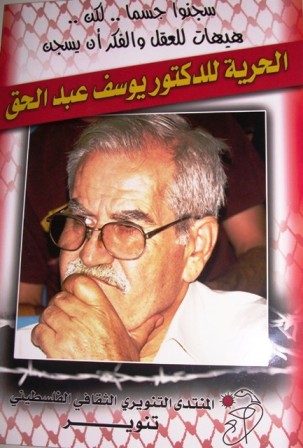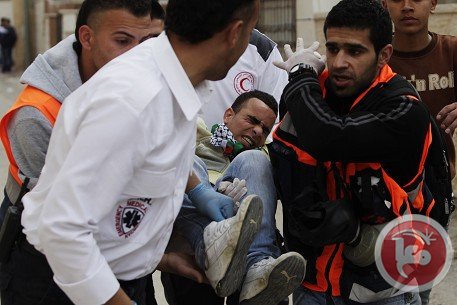Category: In the Media
-
Extension of administrative detention of Dr. Yousef Abdul Haq for the second time
31 March 2012 | Tanwer Human beings are born free, but we are surrounded by restrictions everywhere Jean-Jacques Rousseau Today on the thirty-sixth anniversary of the Palestinian Land Day, which confirms for our people the unity and integrity of our case, the unity of its land, and the right of return and self-determination, the Israeli…
-
Photos: “Land Day across Israel and Palestinian territories”
30 March 2012 | Denver Post Land Day, which began in 1976, marks the day Israeli forces killed six Palestinians during a protest against Israeli occupation of what Palestinians consider to be their land. Palestinians around the world will commemorate Land Day with protests and demonstrations. Read more: Photos: Land Day across Israel and Palestinian territories…
-
Red Crescent medics treat 339 protesters in the West Bank
30 March 2012 | Ma’an News Agency BETHLEHEM (Ma’an) — The Palestinian Red Crescent treated 339 protesters on Friday at protests around the West Bank to mark Land Day, a spokesman said. Muhammad Ayyad told Ma’an that five people were seriously injured and 55 hospitalized as protesters commemorated six Palestinians who were killed by Israeli…



